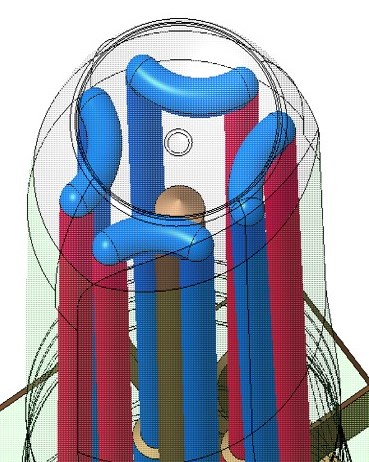A Systematic Approach to Laser Sintering
As an early adopter of laser sintering technology, NyproMold uses a very focused, two-step strategy for evaluating when it makes sense to use it.
NyproMold has had in-house laser sintering capabilities for more than 10 years. As an early adopter, we approached 3D printing with a consistent, two-step strategy. First, we asked how can 3D printing enable a better part and mold design, which could not be achieved through conventional machining? Second, we wanted to understand the benefit of the 3D-printed part design and objectively determine whether laser sintering is the most cost effective way to deliver this benefit.
Printing dozens of identical inserts in an unattended environment sounds like a simple manufacturing process, but realistically, laser-printed parts with their rough surface texture and wide (+/-0.002 inch) tolerances still require heat treat, subsequent CNC finishing operations and polishing to provide the dimensional accuracy, durability and finish required in our molds. This fact, combined with the high price of the material, means these parts can be costly to produce. Bottom line, 3D printing must provide a quantifiable benefit to plastic part quality, processing or part cost.
To support the decision to use the direct metal laser sintering (DMLS) process, we use a variety of simulation software. Mold cooling scenarios are developed in CAD, and the simulation tools enable us to predict the likely benefits of each unique design. It’s common for us to start with low cavitation development molds to confirm the actual results. The most common objective is reducing cycle time without any negative effects to part quality and consistency. The other leading targets for improvements are part distortion/warp reduction and improved part-to-part dimensional stability. Over time we have found the most cost effective and viable use of DMLS is its application in a hybrid process. Mold core/cavity inserts are partially machined with normal tool steels, and areas that have conformal cooling areas that cannot be machined are formed with the DMLS process. These hybrid components often offer the dual benefits of high durability over time, as well as the innovative conformal cooling that can deliver huge cost and quality benefits. Using DMLS is a consideration on every mold for us, and we have implemented it into production molds up to 96 cavities. While it is a unique and high-value technology, every tool has its place, and in the right cases, the benefits are sizable!
For More Information
Richard Stueber, Operations Manager
NyproMold Inc.
955 Tri-State Parkway
Gurnee, Illinois 60031
847-855-2252
rich.stueber@nypromold.com
Related Content
-
The Benefits of Hand Scraping
Accuracy and flatness are two benefits of hand scraping that help improve machine loop stiffness, workpiece surface finish and component geometry.
-
Moldmakers Deserve a Total Production Solution
Stability, spindle speed and software are essential consideration for your moldmaking machine tool.
-
6 Ways to Optimize High-Feed Milling
High-feed milling can significantly outweigh potential reliability challenges. Consider these six strategies in order to make high-feed milling successful for your business.














